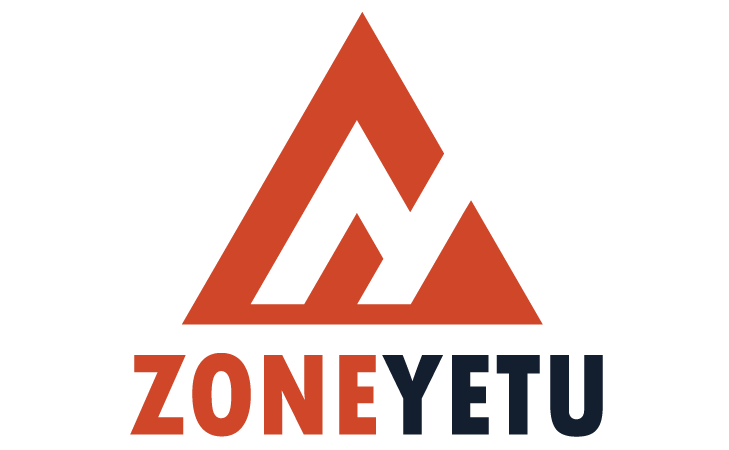
AI-powered technology will improve Rwandan auto emissions testing
In order to support efforts to clean the air and enhance public health, software engineers have created an Artificial Intelligence (AI)-based system that will assist in detecting carbon emission levels from automobiles.
“To reduce car emissions, we have created electrical devices that integrate with software platforms. These gadgets are mounted in cars to track emissions over time and transmit the information to dashboards on the internet.
Emmanuel Tuyizere, an environmental pioneer and the founder of Greenalytic Ltd., stated, “This enables drivers to see the amount of emissions their vehicles are producing and helps them comply with current government standards.”
Beginning in May 2025, the system will be in line with the government’s recent plan to implement more stringent automobile emissions testing.
This initiative demonstrates Rwanda’s dedication to sustainable development, better public health, and cleaner air.
The new technique, called as the Contrôle Technique, will keep mechanical and emissions testing at the current testing facilities while separating them.
Motorcycles will also be subject to mechanical and emissions testing standards for the first time.
According to the Rwanda Environment Management Authority, this action represents a major advancement in guaranteeing that all automobiles and motorcycles fulfill the requirements to safeguard the environment and public health.
To guarantee a smooth experience for owners of cars and motorcycles, all reservations for emissions testing will still be made through the Irembo platform.
Owners of cars and motorcycles are urged to maintain their vehicles on a regular basis in order to comply with emissions regulations and aid Rwanda’s continuous efforts to enhance air quality.
Tuyizere claims that using AI-powered gadgets will assist owners in fulfilling the necessary emissions regulations.
“Tackling automobile air pollution is our goal. The Rwandan government recently imposed rules restricting the registration of brand-new motorcycles with diesel engines. Seeing an opportunity, we used our built equipment to test pollutants from about 400 motorcycles in Kigali,” he said.
According to him, a machine learning engineer working for the company is already improving the dashboard platform to offer sophisticated, data-driven information for emissions control solutions.
Data about emissions is gathered and uploaded to our dashboards. AI aids in the development of prediction models that help owners and drivers make well-informed decisions, such as when a car requires maintenance or repairs to lower emissions.
It helps with diagnostics as well. AI will be a useful tool for car owners, assisting them in real-time comprehension of the necessary measures to take,” he said.
The time is opportune to embrace AI’s potential for green growth, according to Olivier Kabera, Minister of State in the Ministry of Infrastructure.
He declared, “Rwandagua recognizes the immense potential of AI to drive the country’s ambitious green growth and climate agenda in the midst of rapidly changing dynamics that influence and impact our development trajectory.”
“The Rwandan government is increasingly investigating the use of predictive analytics and AI-powered tools in the urban and infrastructure sectors to manage land use, forecast urban growth and climate change, monitor traffic patterns, and assess infrastructure needs, among other uses,” he said.
In order to provide the ideal framework and supportive atmosphere for utilizing the potential of inclusive and sustainable AI, he continued, “international cooperation and partnerships are therefore required.”
AI-driven solutions are already being used to optimize energy networks, increase the effectiveness of trash sorting and recycling, enable precision agriculture, and track deforestation, according to Caroline Reyes, the Global Green Growth Institute’s (GGGI) representative in Rwanda.
In order to address the triple planetary catastrophe, these capabilities can play a major role in decreasing pollution, maintaining biodiversity, and reaching net-zero greenhouse gas emissions. We’re investigating several approaches to using AI.
We’re testing projects, for instance, that employ AI to forecast weather patterns that may result in catastrophes. In order to boost efficiency and attract investment in the tea industry, we’re also employing AI to predict tea crop yields,” she said.
In order to support efforts to clean the air and enhance public health, software engineers have created an Artificial Intelligence (AI)-based system that will assist in detecting carbon emission levels from automobiles.
“To reduce car emissions, we have created electrical devices that integrate with software platforms. These gadgets are mounted in cars to track emissions over time and transmit the information to dashboards on the internet.
Emmanuel Tuyizere, an environmental pioneer and the founder of Greenalytic Ltd., stated, “This enables drivers to see the amount of emissions their vehicles are producing and helps them comply with current government standards.”
Beginning in May 2025, the system will be in line with the government’s recent plan to implement more stringent automobile emissions testing.
This initiative demonstrates Rwanda’s dedication to sustainable development, better public health, and cleaner air.
The new technique, called as the Contrôle Technique, will keep mechanical and emissions testing at the current testing facilities while separating them.
Motorcycles will also be subject to mechanical and emissions testing standards for the first time.
According to the Rwanda Environment Management Authority, this action represents a major advancement in guaranteeing that all automobiles and motorcycles fulfill the requirements to safeguard the environment and public health.
To guarantee a smooth experience for owners of cars and motorcycles, all reservations for emissions testing will still be made through the Irembo platform.
Owners of cars and motorcycles are urged to maintain their vehicles on a regular basis in order to comply with emissions regulations and aid Rwanda’s continuous efforts to enhance air quality.
Tuyizere claims that using AI-powered gadgets will assist owners in fulfilling the necessary emissions regulations.
“Tackling automobile air pollution is our goal. The Rwandan government recently imposed rules restricting the registration of brand-new motorcycles with diesel engines. Seeing an opportunity, we used our built equipment to test pollutants from about 400 motorcycles in Kigali,” he said.
According to him, a machine learning engineer working for the company is already improving the dashboard platform to offer sophisticated, data-driven information for emissions control solutions.
Data about emissions is gathered and uploaded to our dashboards. AI aids in the development of prediction models that help owners and drivers make well-informed decisions, such as when a car requires maintenance or repairs to lower emissions.
It helps with diagnostics as well. AI will be a useful tool for car owners, assisting them in real-time comprehension of the necessary measures to take,” he said.
The time is opportune to embrace AI’s potential for green growth, according to Olivier Kabera, Minister of State in the Ministry of Infrastructure.
He declared, “Rwandagua recognizes the immense potential of AI to drive the country’s ambitious green growth and climate agenda in the midst of rapidly changing dynamics that influence and impact our development trajectory.”
“The Rwandan government is increasingly investigating the use of predictive analytics and AI-powered tools in the urban and infrastructure sectors to manage land use, forecast urban growth and climate change, monitor traffic patterns, and assess infrastructure needs, among other uses,” he said.
In order to provide the ideal framework and supportive atmosphere for utilizing the potential of inclusive and sustainable AI, he continued, “international cooperation and partnerships are therefore required.”
AI-driven solutions are already being used to optimize energy networks, increase the effectiveness of trash sorting and recycling, enable precision agriculture, and track deforestation, according to Caroline Reyes, the Global Green Growth Institute’s (GGGI) representative in Rwanda.
In order to address the triple planetary catastrophe, these capabilities can play a major role in decreasing pollution, maintaining biodiversity, and reaching net-zero greenhouse gas emissions. We’re investigating several approaches to using AI.
We’re testing projects, for instance, that employ AI to forecast weather patterns that may result in catastrophes. In order to boost efficiency and attract investment in the tea industry, we’re also employing AI to predict tea crop yields,” she said.
All Categories
Recent Posts
Tags
+13162306000
zoneyetu@yahoo.com


